These Massive Impact Craters are the Planet’s Battle Scars from Millions of Years Ago
Impact craters are what is left behind when a large comet, meteorite, or asteroid crashes into the surface of a planetary body.
If you look at the surface of planets where the geologic processes have been stopped for millions of years, you can see such craters easily.
They look like large, round holes with a raised rim or lip surrounding them.
Earth has not been spared from its own share of such craters and has been hit even more times than the moon, but erosion and other natural environmental processes tend to break them down over the long, slow march of time.
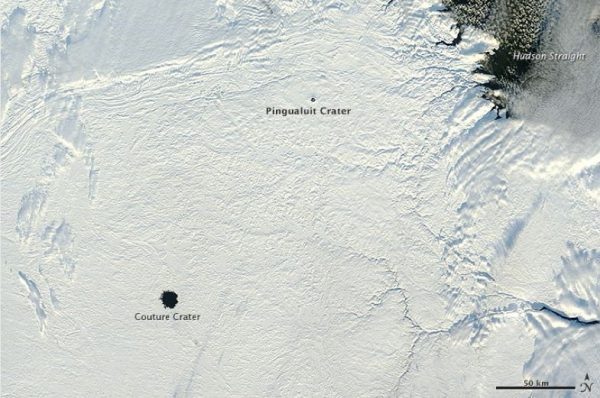
Because of that, there are currently only about 120 recognized impact craters on our planet, with most of them located in Australia, North America, and Europe.
According to a website devoted to learning more about the solar system, the first time an impact crater was identified was in Arizona in the 1920s by workers who found bits of the meteorite inside the crater.
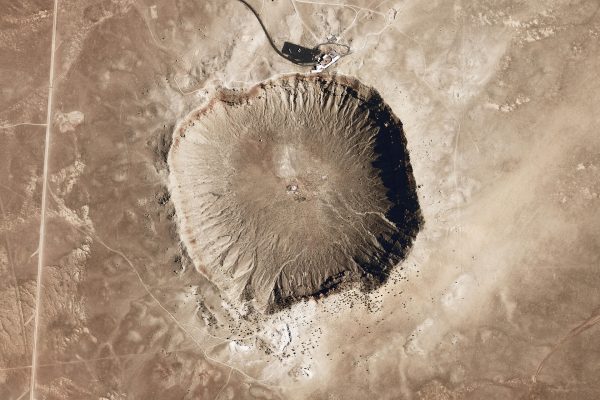
Meteor Crater, or as it’s also known, Barringer Crater, is ‘only’ about 50,000 years old. Its location in the Arizona desert has left it remarkable intact.
The crater was the result of an iron-nickel alloy meteorite about 150 feet across crashing into the planet, and most of the matter the meteorite was composed of vaporized or melted on impact.
When the hole was first formed, it was a lot larger than it is now, being around 4,000 feet across and around 700 feet deep. Over the course of millennia, some erosion has taken place, partially filling the hole, which is now only about 550 feet deep.
The website universetoday.com made a list of the largest impact craters on the planet, and the Barringer Crater wasn’t even in the top ten.
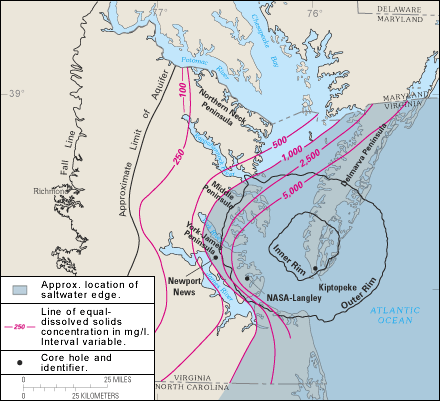
There are two other craters in the US that did make the top ten, however. The first one is the Chesapeake Bay Crater, which is buried under the mud of the ocean floor off the Virginia coast, and is one of the things that shaped the western shoreline of Chesapeake Bay.
It’s about 25 million years old and was found by a drilling core in 1983, when brought up an eight-inch layer of debris from the impact.
The other of the American craters is the 600 million-year-old Beaverhead Crater, which is 37 miles wide and spans Idaho and Montana.
There’s not much of it left to see on the surface, but cones of violently shocked rock that were displaced by the impact were found in the 1990s in Beaverhead, Montana. The center of the rater is located around the town of Challis, Idaho.
Sometimes impact craters fill with water over time, forming lakes such as the deepest lake in the US, Crater Lake in Oregon.
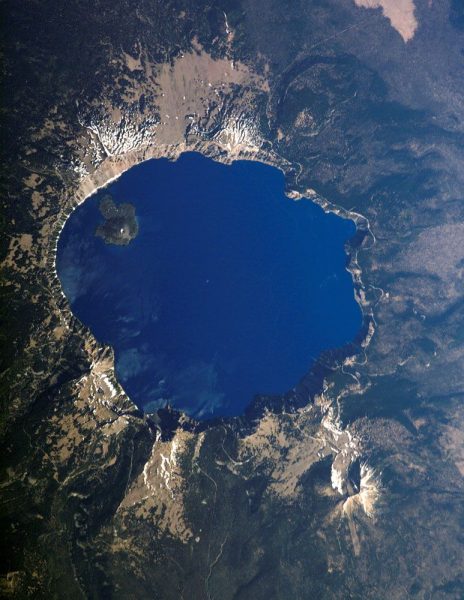
It’s 1148 feet deep, and was formed from the caldera of Mount Mazama. Mount Mazama erupted nearly 8,000 years ago, forming the lake’s basin.
Another example would be the Clearwater Lakes in Quebec, which formed in two impact craters. It’s believed that the two craters were formed at the same time, around 290 million years ago by a binary asteroid.
Lake Acraman in Australia is another impact crater which filled with water over time. The crater is 56 miles across and about 580 million years old. Rock that was ejected from the hole at the time of its formation can be found nearly 200 miles away.
The oldest impact crater anywhere on the planet is also the largest, Vredefort Crater, located in South Africa. At the time of its formation, experts estimate it was 185 miles across.
It was formed more than two billion years ago by an asteroid bigger than Table Mountain.
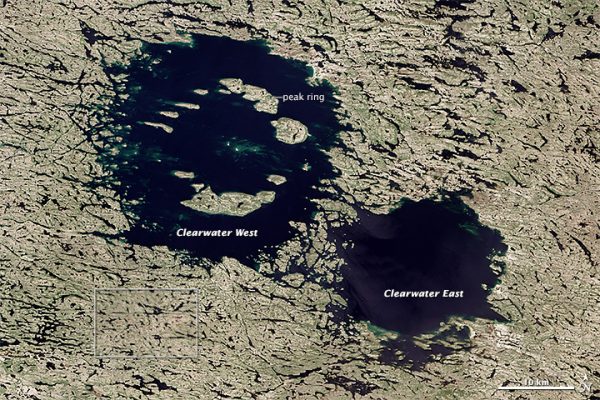
NASA’s discussion of the crater says its initial impact made a dent in the earth about 40 kilometers deep and 100 kilometers wide, before deepening and shallowing as the surrounding ground collapsed, making it difficult to figure out where the edge of the crater currently lies.





